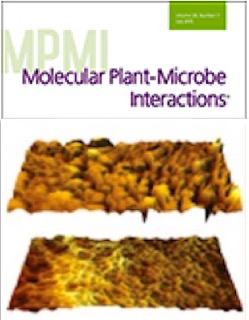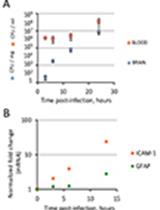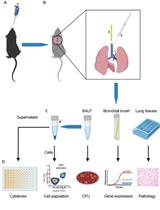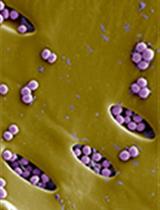- EN - English
- CN - 中文
Evaluation of Nodulation Speed by Sinorhizobium Strains
中华根瘤菌结瘤速度的评估
发布: 2015年08月05日第5卷第15期 DOI: 10.21769/BioProtoc.1554 浏览次数: 9500
评审: Zhaohui LiuAnonymous reviewer(s)
Abstract
Rhizobia interact symbiotically with legumes to form root nodules, where by rhizobia fix atmospheric dinitrogen into ammonia in exchange for carbon produced via photosynthesis. The symbiotic interaction is agriculturally important by reducing the need for fertilizer containing nitrogen. The root and stem nodule bacteria commonly include bacteria in the genera Rhizobium, Mesorhizobium, Sinorhizobium (Ensifer), and Bradyrhizobium, although other genera of bacteria have now been shown to form root nodule symbioses with several legume species (Weir, 2012). Different rhizobial strains form different numbers of nodules on specific legume plant varieties (or cultivars), and the nitrogen fixing effectiveness of each rhizobial strain, its ability to fix nitrogen and transfer it to the plant, is also highly variable (Toro, 1996). Some native rhizobia are ineffective at fixing nitrogen yet form a majority of nodules in filed grown plants. This is referred to as the competition for nodulation problem (Triplett and Sadowsky, 1992). Competition studies are not feasible when evaluating a large number of different native strains. However, nodulation speed of individual strains correlates well with overall competiveness and can be used to identify native strains that overcome the competition problem (De Oliveira and Graham, 1990; Bhuvaneswari et al., 1980).
Materials and Reagents
- Sinorhizobium meliloti strains
- Medicago truncatula seeds
- Sodium chloride (MACRON CHEMICAL, catalog number: 7581-06 )
- Sodium hypochlorite
- Ethanol (Decon Labs, catalog number: 2701 )
- CYG growth pouches (Mega International Inc.)
- Concentrated sulfuric acid (Thermo Fisher Scientific, catalog number: A300-212 )
- Tryptone (BD Bioscience, catalog number: 211699 )
- Yeast extract (Thermo Fisher Scientific, catalog number: DF0127071 )
- CaCl2.6 H2O (Thermo Fisher Scientific, catalog number: C79-3 )
- Agar (Sigma-Aldrich, catalog number: A1296 )
- CaCl2.6 H2O (Thermo Fisher Scientific, catalog number: C79-3 )
- MgSO4.7 H2O (JT Baker, catalog number: 2504 )
- KH2PO4 (JT Baker, catalog number: 3246-01 )
- Na2HPO4.2 H2O (Sigma-Aldrich, catalog number: S9763 )
- Fe-citrate (Sigma-Aldrich, catalog number: F3388 )
- MnCl2.4 H2O (Thermo Fisher Scientific, catalog number: M33-500 )
- CuSo4.5 H2O (Thermo Fisher Scientific, catalog number: C-493 )
- ZnCl2 (JT Baker, catalog number: 4326-01 )
- H3BO3 (Mallinckrodt, catalog number: 2549 )
- Na2MoO4.2 H2O (Sigma-Aldrich, catalog number: S6646 )
- TY medium (see Recipes)
- Fahraeus medium (see Recipes)
Equipment
- P5 filter paper (Thermo Fisher Scientific, catalog number: 09-801C )
- Aluminum foil
- Plant growth chamber
Procedure
文章信息
版权信息
© 2015 The Authors; exclusive licensee Bio-protocol LLC.
如何引用
Nelson, M. S., Chun, C. L. and Sadowksy, M. J. (2015). Evaluation of Nodulation Speed by Sinorhizobium Strains. Bio-protocol 5(15): e1554. DOI: 10.21769/BioProtoc.1554.
分类
微生物学 > 体内实验模型 > 细菌
植物科学 > 植物生理学 > 结瘤
您对这篇实验方法有问题吗?
在此处发布您的问题,我们将邀请本文作者来回答。同时,我们会将您的问题发布到Bio-protocol Exchange,以便寻求社区成员的帮助。
Share
Bluesky
X
Copy link














